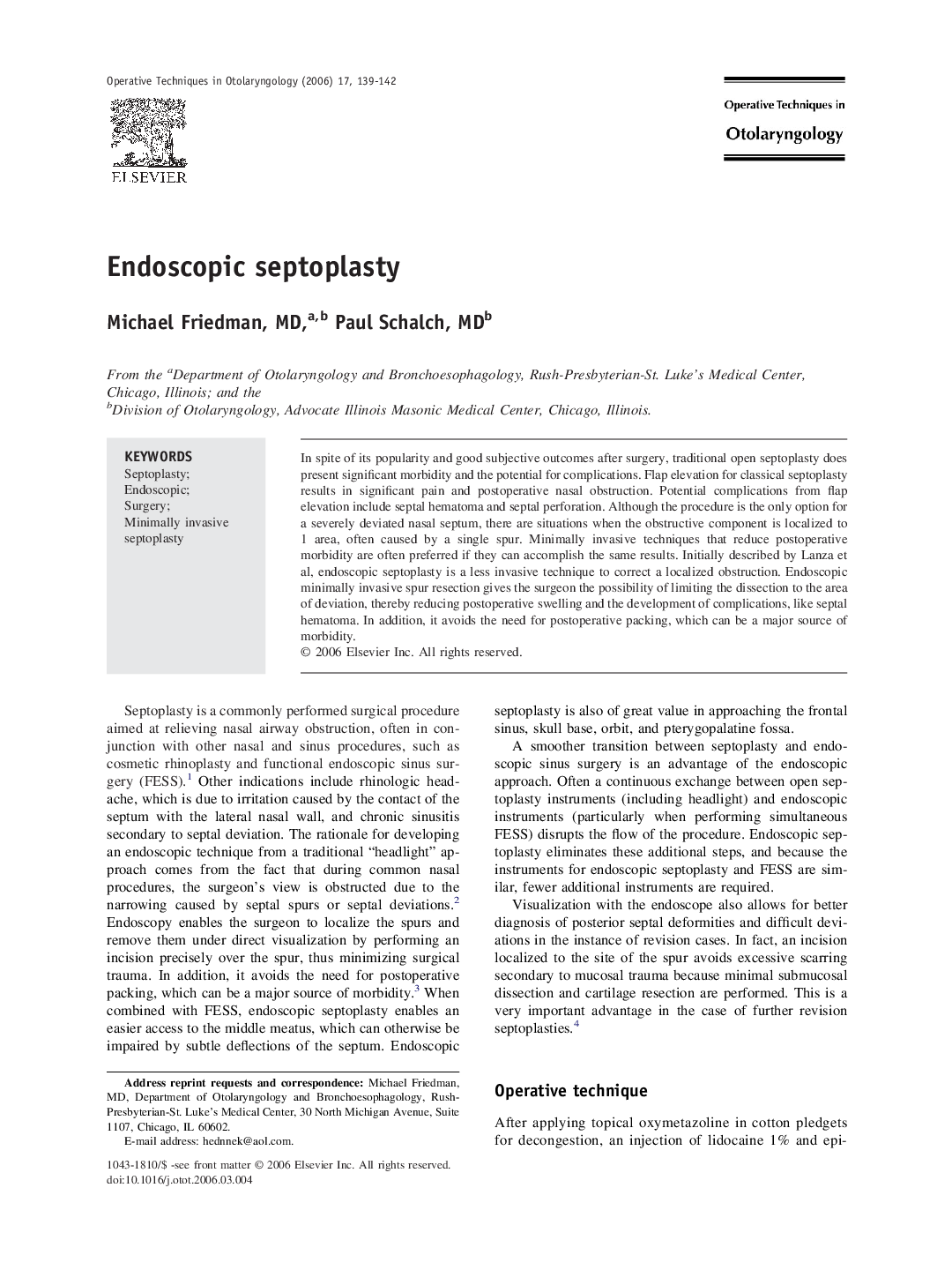| Article ID | Journal | Published Year | Pages | File Type |
|---|---|---|---|---|
| 4123298 | Operative Techniques in Otolaryngology-Head and Neck Surgery | 2006 | 4 Pages |
In spite of its popularity and good subjective outcomes after surgery, traditional open septoplasty does present significant morbidity and the potential for complications. Flap elevation for classical septoplasty results in significant pain and postoperative nasal obstruction. Potential complications from flap elevation include septal hematoma and septal perforation. Although the procedure is the only option for a severely deviated nasal septum, there are situations when the obstructive component is localized to 1 area, often caused by a single spur. Minimally invasive techniques that reduce postoperative morbidity are often preferred if they can accomplish the same results. Initially described by Lanza et al, endoscopic septoplasty is a less invasive technique to correct a localized obstruction. Endoscopic minimally invasive spur resection gives the surgeon the possibility of limiting the dissection to the area of deviation, thereby reducing postoperative swelling and the development of complications, like septal hematoma. In addition, it avoids the need for postoperative packing, which can be a major source of morbidity.
